
























































airports, college campuses, and industrial facilities. Their efficiency in transporting people and goods within such environments has contributed to their growth.

Despite the economic challenges posed by inflation, market research firm Grand View Research conducted a study that paints a positive picture for the electric cart industry. The global electric cart market is projected to reach a value of $4.9 billion by 2028, with North America, including the United States, maintaining a significant market share.
MARKET EXPANSION: As the electric cart market expands, manufacturers are introducing innovative features like advanced battery technology and enhanced safety features, making electric carts more attractive to consumers.
CUSTOMIZATION: Electric carts are increasingly being customized to meet specific needs, broadening their range of applications, including street-legal electric carts for suburban commuting.
Even in the midst of rising inflation, the United States is witnessing a transformative shift in transportation with the remarkable growth of the electric cart industry. Electric carts, also known as golf carts or low-speed vehicles, are evolving beyond their traditional roles, infiltrating urban and suburban landscapes, and reshaping personal mobility and commercial applications.
ENVIRONMENTAL CONCERNS: The increasing emphasis on environmental sustainability is a driving force behind the growth of the electric cart industry. These vehicles produce zero emissions, mitigating air pollution and reducing the nation's carbon footprint.
URBANIZATION: With rapid urbanization comes traffic congestion and the need for efficient, compact, and ecofriendly transportation options. Electric carts have become a solution, offering a convenient mode of transport for short-distance commutes and urban deliveries. Government
INCENTIVES: Federal and state governments have introduced incentives and tax credits to promote electric vehicles. Even amidst rising inflation, these incentives remain a critical factor in making electric carts accessible and affordable for consumers and businesses alike.
COMMERCIAL APPLICATIONS: Electric carts are finding strong utility in various commercial sectors, including resorts,
INFRASTRUCTURE DEVELOPMENT: Rapid progress in charging infrastructure ensures convenient recharging, addressing a major concern for potential buyers.
PUBLIC AWARENESS: The growing public awareness of the environmental benefits and cost savings associated with electric vehicles continues to boost confidence in electric carts. The electric cart industry in the United States is exhibiting remarkable resilience, continuing to grow even in the face of rising inflation. Driven by environmental concerns, urbanization, government incentives, and expanding commercial applications, this industry's upward trajectory remains intact. As electric carts become more advanced, adaptable, and accessible, they will play a crucial role in shaping sustainable transportation in the United States, underscoring their importance in an economy grappling with inflationary pressures. Keep an eye on these electric vehicles as they illuminate the path to a greener and more cost-effective future in personal and commercial transportation.
We hope you enjoy this October, 2023 edition of Golf Carting Magazine.
Trevor Rose Senior Editor Trevor@golfcarting.com

MAGAZINE
GOLF CARTING // Issue 41 // October 2023



Senior Editor: Trevor Rose - trevor@golfcarting.com
Creative Director: Troy Merrifield - troy@golfcarting.com
Production Director: Christian Amico - chris@golfcarting.com
Staff Writer: Kelly Madden
Staff Writer: Josh Delsota
Staff Writer / Social Media: Tony Benjamin
Golf Carting® is published monthly by GC Media Group, LLC. Reprinting in whole or by any means- electronic, graphic or mechanical, including photocopying or information storage and retrieval systems is forbidden without written permission from the publisher.
Advertising opportunities and inquiries to: chris@golfcarting.com
Editorial contributions are welcomed, but editors recommend that contributors contact us first. Contribution must be accompanied by return postage, and we assume no responsibility for damage or loss of material. Manuscripts must be typewritten, and all photos have to have captions. Photo model releases of all people in photos must accompany manuscript. GOLF CARTING reserves the right to use material, and we reserve the right to edit material to meet publication requirements. E-mail contributions or inquiries to: trevor@golfcarting.com
WARNING: Certain action photographs depicted in this magazine are potentially dangerous. The drivers and vehicle occupants seen in our photos are experienced professionals. Do not attempt to duplicate any stunts. Wear a helmet and safety restraints while operating a Golf Cart, and never drive beyond your capabilities. Do not drink and drive while operating a Golf Cart. We also encourage you to “Tread Lightly” while respecting the outdoors and other outdoor enthusiasts.
Use your head and enjoy the ride!
Stay
https://www.facebook.com/golfcarting
www.golfcarting.com




Tired of dealing with overseas representatives, over-promised and under-delivered lithium battery solutions? Andy Ilg of Big O’s Golf Carts in Peachtree City, Georgia, turned to the industry leader in lithium battery technology, Allied Battery. “At a time when industry needs and customers’ demands are at an all-time high, it is reassuring to find a U.S. developed lithium battery to meet these needs,” Andy explains. “Not only are we offering Allied Lithium batteries to our retail customers, but we also trust the Allied name to power our new line of EVs, Voyager Electric Vehicles. Their quality and reliability are just what we were looking for.”
Understanding the importance of simplicity and convenience, Allied Lithium batteries now perfectly integrate with the screen and controller of your choice from various golf cart manufacturers. Their advanced Battery Management System (BMS) is equipped with CAN bus and RS485 communication, allows for the display of State of Charge, Speedometer, Odometer, and more. These features integrate perfectly with all Navitas Chassis Controllers and Screens, ensuring

connections to most popular vehicles and upgrades.
Case in point: The Voyager Electric Vehicle team worked directly with Allied engineers to seamlessly integrate their new screens with Allied Commercial Batteries through CAN bus allowing the Voltage, Amp Draw, Odometer and State of Charge readings to be on a single screen. “The Allied team was just as committed to integrating their batteries with our media screens as we were. It was clearly a win-win for all of us,”
describes Ashlee Ilg, co-owner of Voyager Electric Vehicles. “We are very pleased with our partnership and confident in what’s to come between Voyager EV and Allied Lithium.”
With a long-standing history in the lithium battery world, Allied Battery is strongly positioned to work directly with 1,000+ dealers nationwide, ensuring the best dealer and enduser experience.

“At Allied Battery, we believe in providing the best service and pricing available. That's why we have a dedicated in-house support and engineering team, as well as a national sales organization covering the entire country,” expressed Glenn Reigelman, Allied Battery Director of Marketing. “Dealers no longer have the hassle of texting and emailing indirect representatives or waiting for answers and pricing from middlemen. With Allied Battery, you can work directly with our knowledgeable team for quick and efficient solutions.”
Unlike other battery providers who rely on generic opensource apps or lack Bluetooth connectivity altogether, Allied Battery has developed their app from the ground up. The app works seamlessly with batteries, providing accurate State of Charge, Cycle Count, Cell Status, and much more. With the Allied App, you'll have complete control and visibility over your battery's performance.


Allied’s commercial batteries feature an innovative sleep mode that activates during user errors such as leaving on accessories, forgetting to turn off headlights, or failing to charge after a long day on the course. Sleep mode ensures that your customers battery remains protected and ready for action when you need it.

For added peace of mind, Allied Battery now offers 400A and 600A Solenoids, which provide an extra layer of protection between the battery and the car’s accessories. With the combination of the sleep mode and our custom solenoids, users can confidently store batteries longer than ever.
Allied Battery's commitment to innovation is evident in their expanding commercial line. This summer, Allied Battery proudly introduced the 48V 210AH battery, specifically designed to fit perfectly in the popular Navitas and EZGO TXT square-styled battery tray. With this addition, dealers can install the battery without any modifications to the cart, making the transition to dominant lithium power even easier. Moreover, Allied is upgrading their 150AH battery to a more powerful 160AH offering, providing customers with even more

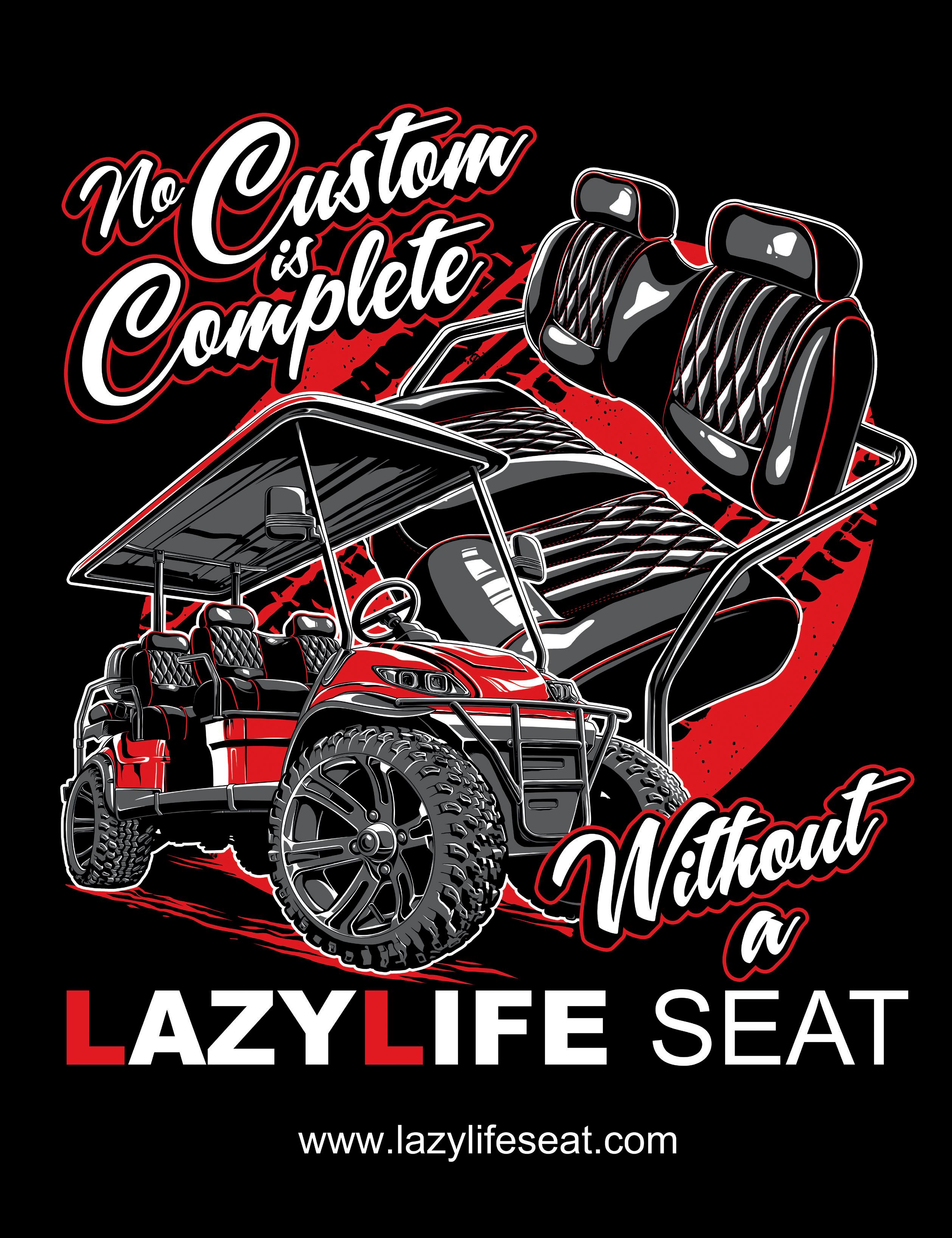
energy to power their adventures.
Converting a golf car to lithium power has never been easier. In less than 30 minutes, dealers can remove the outdated lead-acid batteries (6V, 8V, or 12V), replace them with Allied batteries, and secure them using the existing mounting brackets. The "Drop-in-Ready" lithium batteries connect in parallel, allowing dealers to adjust the amp hours based on their customers' specific needs. Allied Battery's "Drop-inReady" product line includes 36V, 48V, and 72V batteries.


At Allied Battery, safety is paramount. Their batteries are designed and engineered by an in-house team of electrical and mechanical experts. Each product undergoes rigorous testing and is safety-certified with international accreditations. With proven LifePO4 cell chemistry and smart, rugged BMS, Allied batteries impeccably integrate with high-powered aftermarket controllers and motors. The sealed batteries are non-combustible and non-flammable, ensuring the utmost safety for dealers and end-users.
Allied Battery believes that convenience should be part of the package. Thanks to the safety level of the LifePO4 batteries, FedEx and UPS have approved them for both air and ground
shipments. That's why all the "Drop-in-Ready" batteries ship for free to your door in the continental U.S. Additionally, the "Commercial" line includes free shipping on any order of 6 or more batteries. Crating securely and shipping LTL, Allied are ensured to arrive in perfect condition.
Countless dealers have already experienced the reliability and power of Allied Battery. With Allied Battery’s comprehensive "Commercial" and "Drop-in-Ready" lines, they are the single source for all your lithium battery needs. Visit AlliedLithium.com or call (800) 625-5110 for more information. Unlock the power of lithium batteries with Allied Battery today!

IIf you’re like most golf car owners, you’re aware of the benefits of lithium-ion batteries. They deliver a much longer range, require no maintenance or watering, weigh less, and outlast other types of batteries by years.

On the downside, they carry a hefty price tag compared to flooded lead-acid and AGM batteries. That is the single biggest reason people give for not switching to lithium-ion. But the initial price tells only half the story.

To better understand the long-term cost of these technologies, you must consider their life spans, the number of batteries needed, and how frequently the batteries require replacement. Those calculations uncover the total cost of ownership (TCO) of each technology over the life of the lithium-ion battery.
Remember, lithium-ion batteries have lifetimes of up to 10 years without regular maintenance or replacement. During that period, flooded lead-acid and AGM batteries may need
replacing two to three times. Further, you may need only two to three lithium-ion batteries, while flooded lead-acid, AGM, and gel require six with the initial purchase and each replacement.
To sum it up, lithium-ion batteries deliver a much lower TCO than flooded or AGM batteries over their expected 10-year life. They will save you thousands of dollars.
The bottom line? If you’re in the market for lithium-ion batteries and can afford the price tag, go for it. They will unleash the full potential of your vehicle and reduce your TCO.
As a complete battery solutions provider, Trojan Battery Company offers a full range of golf and PTV batteries, including lithium-ion, AGM, Gel and flooded lead-acid. To learn more, find your local Authorized Trojan Dealer. Trained battery experts will answer your questions and help you select the best option for your lifestyle and budget.


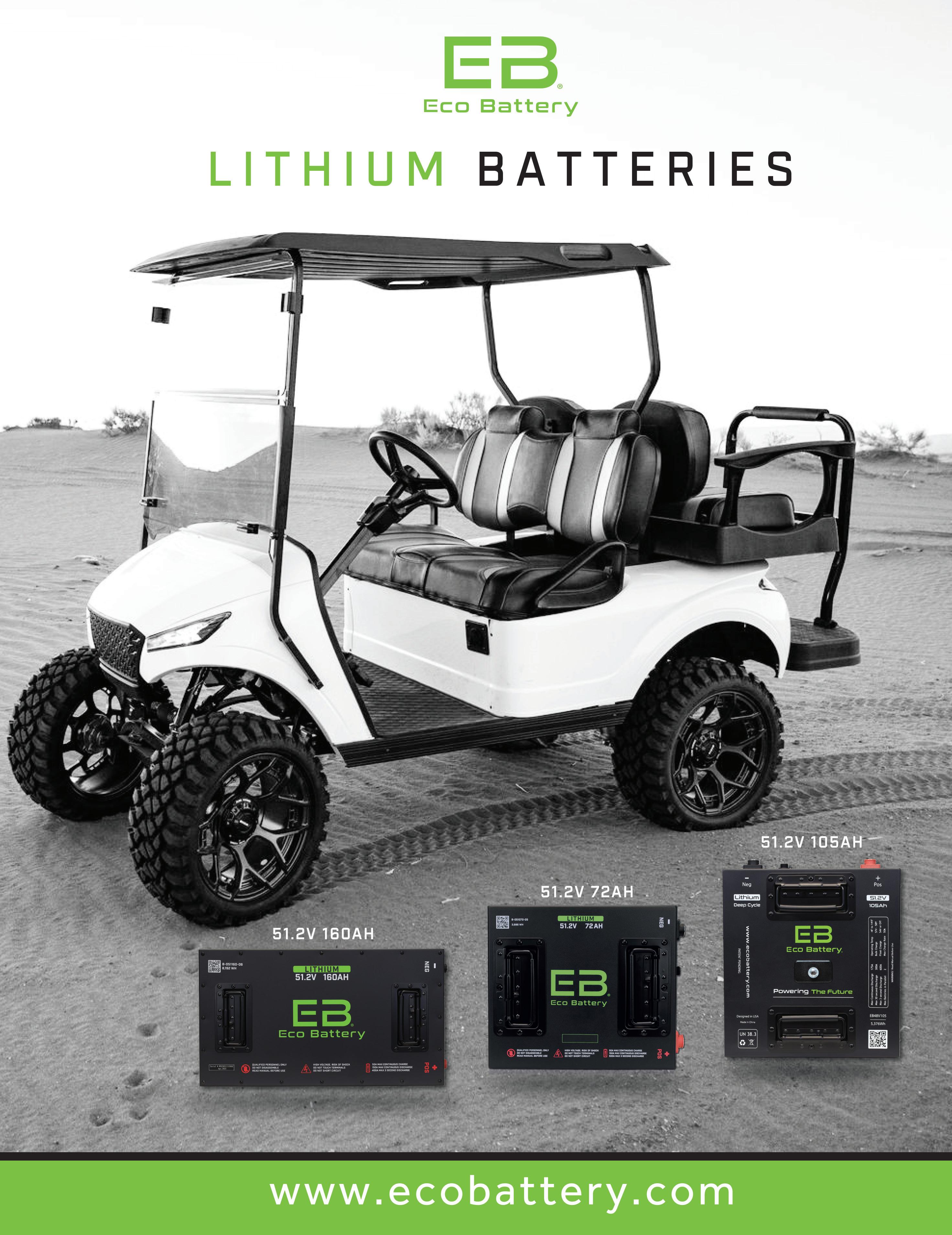
With a dedication to a cleaner environment, ecological sustainability, and fresh innovation, PILOTCAR EV is quickly establishing their company and vehicles as a premier player in the electric vehicle marketplace.
PILOTCAR EV was established in 2011 and has manufacturing facilities in Turkey and the United States, and other offices for research and development and design in Germany and Bulgaria. Their entire team is focused on new, cutting-edge innovation in the golf and utility EV world and providing their customers with the ultimate in safe, modern electric vehicle transportation.
PILOTCAR has created a wide array of electric vehicle configurations in their product lines, all specifically designed for the unique needs and uses of their customers. From a leisurely, 18-hole round of golf to cargo transportation, construction sites, airport and shipping terminals and a host of other commercial uses, PILOTCAR EVs offer the perfect vehicle for any use.
Created as the most eco-friendly and ergonomically designed EVs on the market today, PILOTCAR carts provide the ultimate in modern technology and state-of-the-art innovation.

Mete Timur is the President and Co-Founder of PILOTCAR EV, which manufactures their vehicles in Lee County, Florida, and from their plant in Turkey. Mr. Timur says their carts come from Turkey at approximately 40% completion and the remainder of the components are assembled at their Fort Myers, Florida, facility. “We do the programming here as well as the final quality control and final road test at the Fort Myers location, making sure every single vehicle meets our exacting production standards,” he said.
The PILOTCAR PC-2 is the flagship model in the company’s lineup and is available in a variety of configurations. The PC-2 Golf is the perfect choice for the golf course, complete with premium seats that rival the finest luxury car, an eye-catching body design and dozens of standard and optional features and accessories. The windshield is made of safety glass, and there is even a windshield wiper available. Other unique creature comforts include an extended top to protect you from the elements, side mount and overhead rearview mirrors, sport steering wheel and several vibrant body color options.
The company also makes a PC-2 Lifted version equipped with oversized, all terrain tires on a lifted chassis perfect for the rugged outdoor trails and job sites.
PILOTCAR vehicles are powered by either a 48V AC, 4 kW (5.44 hp) rated 9.60 kW (13 hp) peak motor or a 6 kW (8.20 hp) rated, 12.46 kW (16.95 hp) peak motor. Their premium battery option is a 6X8V TROJAN T-875 (8.16 kWh) lithium package paired with an OVARTECH 3.3 kW onboard charging unit producing 85-265


VAC@16A 40A/48V, and the motor control unit is an AC CURTIS 350 A-450 A. The motor and control units come with a 5-year limited warranty. They also offer a traditional, lead acid battery package.
The easy steering is from the self-compensating, double reduction helical rack-and-pinion system, and the ultra-smooth ride is provided by the semi-independent, swing arm with coil springs over hydraulic shock absorbers in the rear and fully independent McPherson style strut suspension in the front. Safe braking is from the self-adjusting mechanical, rear wheel drum brakes and regenerative brake or the optional, 4-wheel hydraulic drum brake system.
The rugged chassis is an automotive style steel frame with high corrosion resistance that is sanded and prepared with E-coating and static wet paint.
The PILOTCAR EV PC-2 is capable of a range of around 55 miles when equipped with the lithium battery package and will reach full charging in about 6 hours. The top speed is 25 miles per hour and the turning radius is just 9.8 feet. The PC-2 weighs in at 886 pounds with the lithium battery package and the load capacity is 881 pounds. Dimensions are 94.2-inches long, 47.8-inches wide and 77.3-inches tall including the top. The wheelbase measures 64.5-inches.
When it comes to providing multiple passengers with a premium ride or getting the job done in a commercial setting, PILOTCAR EV has the vehicle you need.
The PC-2+2 is a 4-passenger cart perfect for taking the family to the community pool, a school campus, medical
facility, sports venue, or other commercial environment. This rugged vehicle comes in a lifted design for easy passenger access and can be equipped with many optional accessories and creature comforts. The PC-4+2 features 6 forward-facing seats and can also be equipped with 2 rear-facing seats to transport 8 passengers safely and comfortably. These highly innovative EVs are almost limitless in their use with a 50-mile range and a completely eco-friendly power supply.
Both of these configurations rank as the company’s most popular models.
The PC-W is the company’s premier work utility electric vehicle, allowing the user to take advantage of the huge cargo box with a convenient fold-down tailgate on the rear, rugged all-terrain tires, lockable storage compartments and a host of other features perfect for use on the farm or ranch, family camp or hunting grounds, getting tools and equipment around the job site and much more. The PC-W line is also ideal for use on resort and hotel properties, as golf course food and beverage vehicles and as security and medical transportation. The PC-A model comes with a side mounted stretcher and seating for medical personnel and patients.

PILOTCAR EV has about 900 employees worldwide, and their full line of premium electric carts are sold through their large dealer network in over 40 countries.
“83% of our cars are produced in our own facilities, including seats, all body parts and the chassis,” said Mr. Timur. “We use motors made in Germany, Curtis controllers, and only the finest European and American Parts. Because we are building 83% of the cars it has allowed us to keep a close eye on their production and ensure comprehensive control of the vehicles from start to finish.”




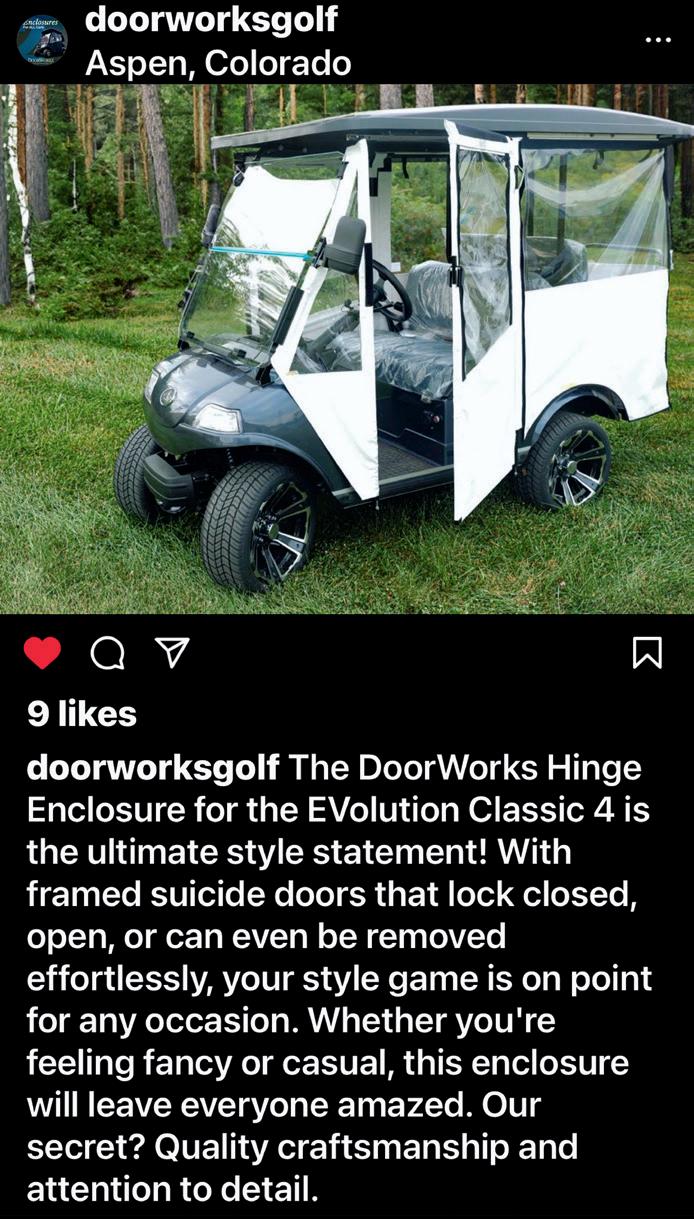
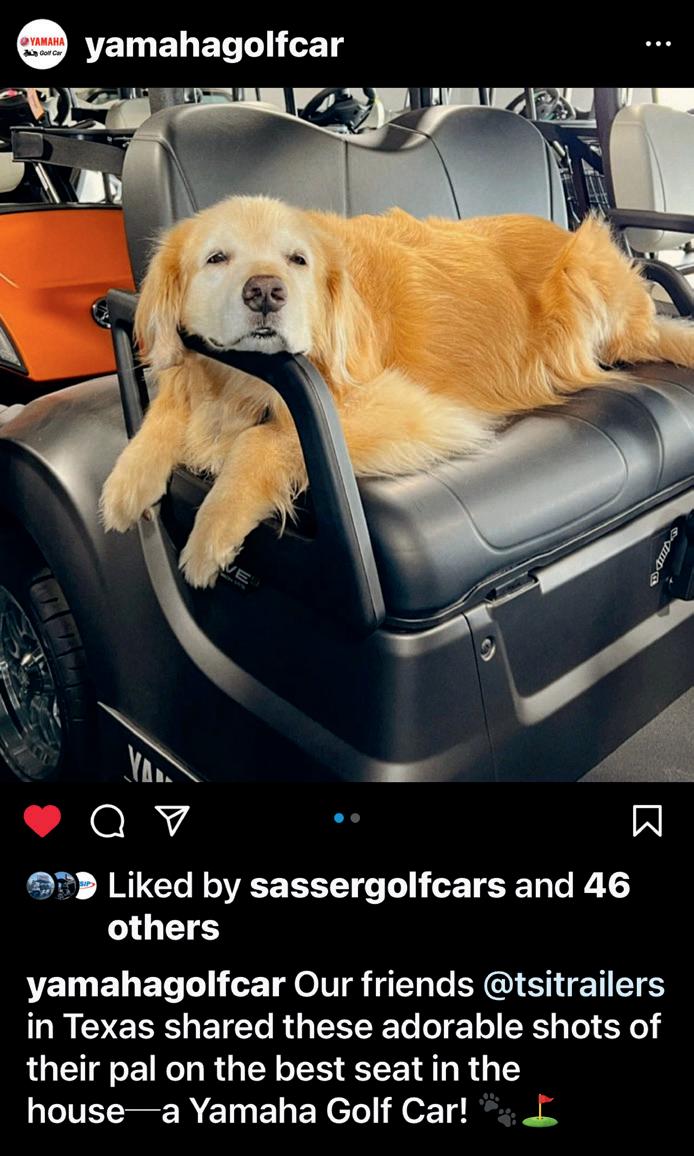



When longtime friends and avid golf cart enthusiasts Mike Burdman and Joe Magaro first got together, they quickly discovered their shared passion for just about anything having to do with carting. It didn’t take long for them to dive deep into the carting life and come up with new ways to promote the low speed lifestyle through fun, exciting new adventures.
“Joe and I just love everything about golf carts and felt we could bring a lot of new ideas to the carting lifestyle,” Mike said. “One thing led to another, and before we knew it our

minds were racing with new build ideas and interesting ways we could fully expand our love for golf carts.”
The buddies are based in Boca Raton, Florida, and have discovered that their marketing and promotional skills are right up there with their knowledge and expertise in designing, engineering, and building unique custom carts. The duo has established Cart Life TV channel on YouTube, the lowspeedliving.com website and CartLifeFL on Facebook and Instagram. “We just got started in early 2023, but once we put
our heads into it and thought up new ways to grow the carting lifestyle, we were off to the races – we did a lot of learning as we grew,” says Mike.
You’ll find links to all of their media outlets at the end of this article.
When Mike and Joe began thinking outside the box about golf carts, they came up with a concept they knew would be a fun adventure – just how far can you travel on a golf cart?

Mike points out that the key reason he and Joe make such a good pair for advancing the carting lifestyle is the way their minds work. “We’re constantly coming up with a lot of “what if” ideas, and we think a lot alike when it comes to planning and carrying them out,” he says. “We like to knock down and expand any boundaries about golf carting.”
The guys chose a 2007 Club Car® DS gas model to modify and customize for experimenting with long distance cart travel, the fifth cart Mike has owned and a sentimental favorite as the one he used to use in a former job. The cart has a standard drive train but has been outfitted with a number of customization features designed to make long distance cart travel not only possible, but safe. The cart is fully street legal,
has a VIN and Florida license tag and title. They used a MadJax® rear cargo and cooler rack to accommodate the gas tanks and other gear they’d need for heading out on the road, among other custom modifications.
Route planning is also a key issue, and the team planned their trips carefully to avoid any streets with unattainable speed limits. Their first experimental trip was from Boca to Palm Beach Island along Florida’s southeast coast, about a 50mile trip each way. Joe Magaro points out that the main thing in their new challenge was the planning, making sure to think of any potential need or issue that may come up while on the road and making sure to be prepared to deal with it. “Not only do we need to plan for fueling and other needs, but we’ve dealt with a mechanical issue or two successfully by thinking ahead and taking certain tools and parts along for the trip,” Joe said.
The Club Car is equipped with a complete safety and medical kit, tool kits and related equipment, fire extinguishers and two gas cans in custom mounts. They also carry things like additional fuel pumps, tire repair kits and many other small parts in case of a problem. There will be no support vehicles traveling with Mike and Joe, just the two golf cart lovers experiencing their latest adventure.




Across The Overseas Highway Cart
Life is heading out for their newest long distance cart journey on September 23rd, 2023, from Boca Raton to Key West, Florida, and are fully prepared for whatever comes their way. The trip is about 225 miles and Mike and Joe are going to complete it within 24 hours. “We know how long it will take us as to the route, road conditions and travel time, but we also plan on a few stops along the way to take in the awesome Keys sights and experiences along the trip,” Mike said.
The duo will use only roads with a maximum speed limit of 45 mph, following Highway A1A to Florida City to connect with the famous Overseas Highway and 7 Mile Bridge. September should mean a bit less road traffic than found in the peak tourist and travel seasons, but Mike and Joe have put in a lot of research and discovery in planning their route and expect smooth sailing. “We steer clear of any interstate highways and stay on 2-lane roads, and think we can make it in between 8-9 hours, depending on any problems and how long it takes to get a fish sandwich along the way,” Joe said.
There are some that have said this long distance cart trip is a crazy idea, but Mike and Joe understand the challenge. Follow them on their media outlets and we think you’ll agree these two are capable of just about anything related to pushing the boundaries of golf cart life.
WEBSITE:
https://cartlife-fl.com/
FACEBOOK:




https://www.facebook.com/ CartLifeFL


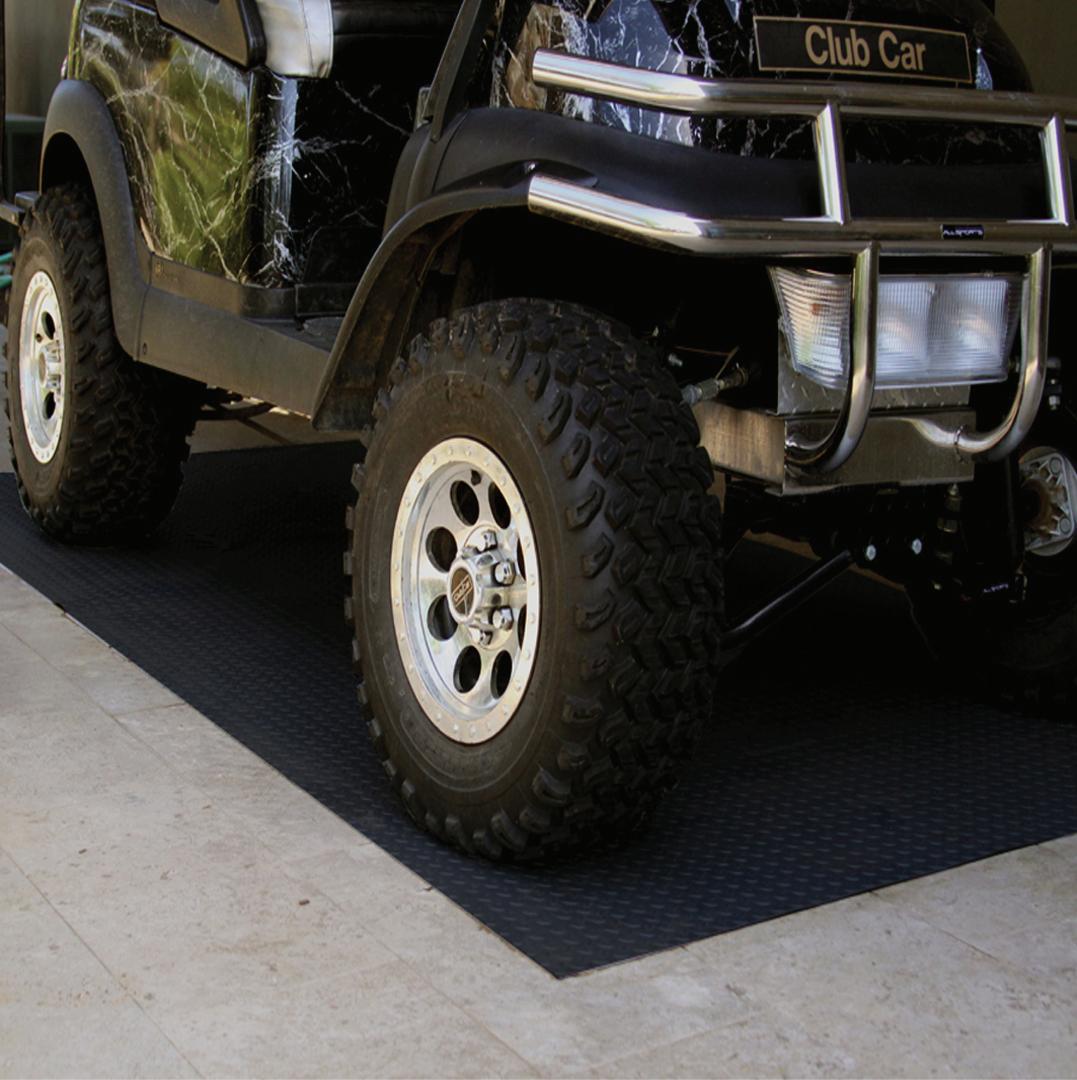

YOUTUBE:
https://www.youtube.com/ watch?v=AvSRKSDyT2A&t=318s
INSTAGRAM:
https://www.instagram.com/ cartlifefl/


OWNER: Dennis Parker from Kingman, AZ
YEAR/MAKE/MODEL: 2023 custom built Pete 379 Golf Cart
HI DENNIS, CAN YOU TELL US ABOUT THIS CUSTOM BUILD?
The cart has a 420cc gas engine with air horns, it is street legal, all lights work. I can build them as a 2,4,and 6 seater. I can also build them with suicide doors, AM/FM Blue tooth radio, air ride suspension, golf bag holder, and whatever else you want.
ARE THERE ANY CUSTOM FABRICATION OR CUSTOM MADE PARTS?
Carts are built with steel frames and all body panels are aluminum. The only thing used from golf Cart is rear-end assembly, steering shaft, steering column, break pedal, and gas pedal.

WHAT AFTERMARKET PARTS DID YOU USE? E-Z-GO and Club Car
SOME BACKGROUND ABOUT YOU AND HOW LONG YOU HAVE BUILDING CARTS, HOW DID YOU INTO THE BUSINESS?
Retired owner/operator I got board so decided to build a Pete Golf Cart and here we are a year later.
WHAT ARE YOUR FUTURE PLANS FOR YOU OR YOUR COMPANY?
My son moved here about 6 Months ago and now it's a family deal
IS THERE ANYTHING ELSE YOU'D LIKE TO ADD
They are very well built

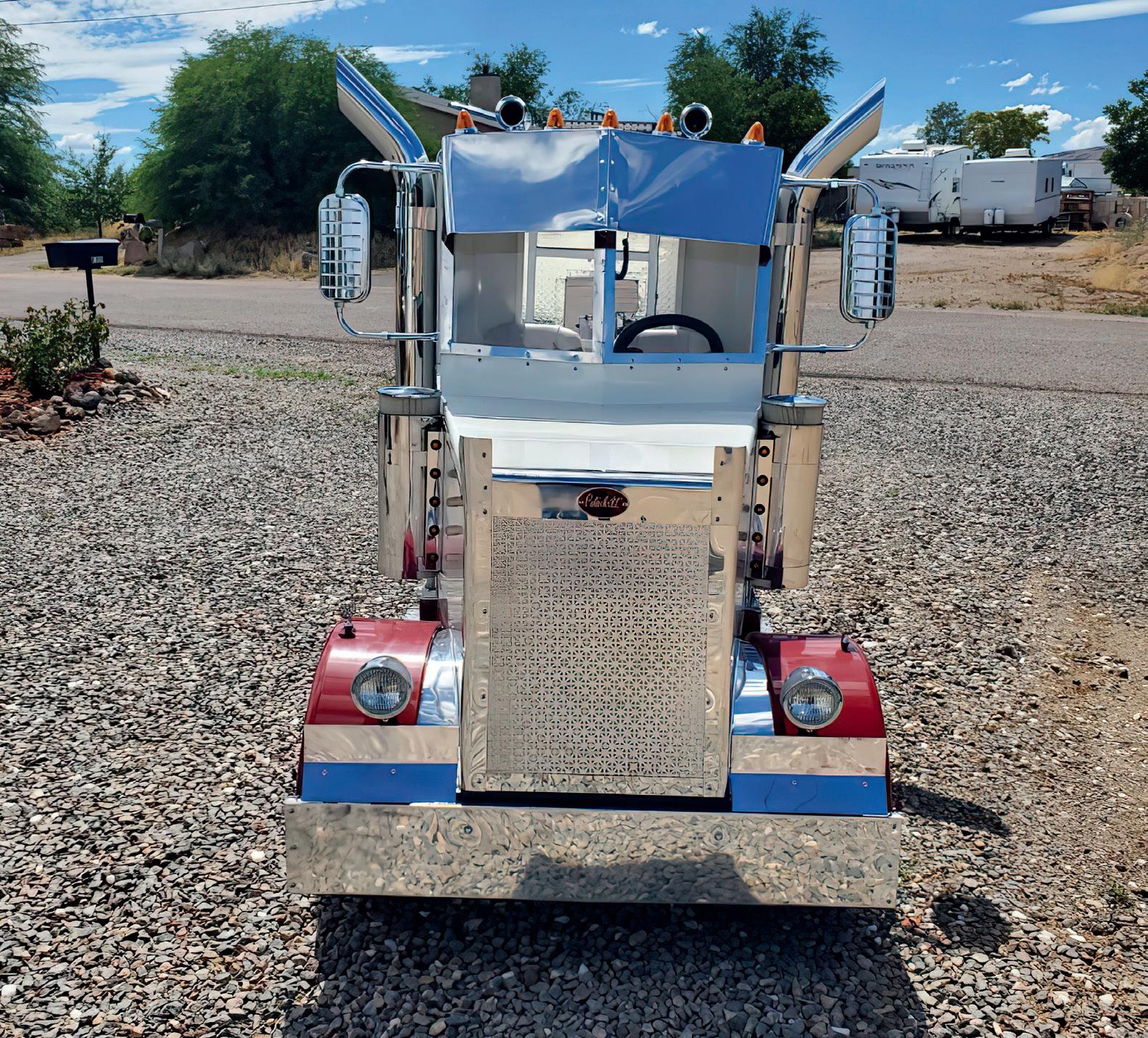


Inflation, the steady rise in the price of goods and services over time, is a modern concern for consumers across all industries in the United States. One area where its impact has become particularly noticeable is in the world of neighborhood electric vehicles (NEVs) and golf carts.
Yes, you read that right. When you think of inflation you think of paying more for milk and eggs and gas. But even the leisurely pursuit of recreational carting has not been immune to the effects of inflation. For many of us, electric carts have long been an essential part of local transportation, providing a convenient means of getting around neighborhoods, retirement communities, and more. However, recent years have seen a surprising surge in cart prices, largely due to the broader economic phenomenon of inflation.
Inflation is driven by a combination of factors, including increased demand for goods, rising production costs, and the devaluation of currency. These forces ripple through the economy, affecting everything from groceries to luxury items, and electric carts have not been spared.
One of the primary drivers of this increase in electric cart prices is the rising cost of materials. carts typically feature compact, electric-powered designs that rely heavily on materials like steel, aluminum and plastic for their construction. In recent times, the cost of these materials has surged, pushing up production expenses for cart manufacturers. Consequently, what was once an affordable mode of local transportation, with prices hovering around $7,000 for an entry-level model, can now easily command prices upwards of $9,000 or even $10,000. Higher-end and customized cart models have seen even steeper increases. What's more, the parts and accessories market for electric carts has also felt the effects of inflation. Components like batteries, tires, and replacement seats have all seen their prices rise, adding to the overall cost of maintaining an electric vehicle.
This has prompted cart owners to think twice before investing in upgrades or replacements. The impact of inflation doesn't stop at the purchase price; it also affects the cost-of-service labor. Electric carts require routine maintenance and occasional repairs to ensure they remain in peak condition. As the prices of parts and materials have risen, so too have the labor costs associated with servicing these vehicles. Owners of electric carts may find themselves paying more for routine check-ups, battery replacements, or repairs, adding an extra layer of expense to their local transportation.
Though we haven’t arrived at the point where we need to roll a wheelbarrow full of cash to the dealership to buy a cart, given the challenges posed by inflation, many consumers are seeking ways to save money when purchasing an electric cart. Here are some strategies to consider:
Buy Used: Opting for a used golf cart or NEV can significantly reduce your upfront costs. Many reliable used
carts are readily available on the market at a fraction of the price of new ones. Just ensure that you thoroughly inspect the vehicle's condition and battery health before making a purchase.
Consider Leasing: Leasing an electric cart can provide a more budget-friendly alternative to buying. Leases often come with lower monthly payments and maintenance costs, allowing you to enjoy the benefits of an electric cart without the full purchase price.
Explore Financing Options: Some manufacturers and dealerships offer special financing deals and promotions that can help offset the impact of inflation. Look for low or zero-interest financing options, extended warranties, or bundled service packages to maximize savings.
Shop Around: Don't settle for the first cart you come across. Compare prices and features from multiple dealerships or online platforms to find the best deal that fits your budget.
Consider DIY Maintenance: If you have some mechanical skills, you can save money on maintenance and repairs by learning to do some tasks yourself. There are plenty of resources and tutorials available online to guide you through common cart maintenance procedures.
What is the future of inflation and electric cart prices? Wish we knew. It’s likely prices will continue to be affected by inflation and many wonder if there is hope for relief in the coming years. While it's challenging to predict with certainty, some economic indicators suggest that inflation may not persist indefinitely. Central banks and governments often implement measures to combat high inflation rates, such as adjusting interest rates, controlling money supply, and implementing fiscal policies. These efforts aim to stabilize prices and maintain economic growth. In the long term, these measures could potentially lead to a decrease in inflation. Additionally, economic cycles have shown that inflation is not a constant upward trend. It can fluctuate over time, influenced by various factors like supply chain disruptions, changes in consumer demand, and global economic conditions. Thus, while inflation has certainly impacted electric cart prices in recent years, it may not continue to rise indefinitely.
In conclusion, the impact of inflation on electric cart prices has been substantial. The cost of purchasing a new electric cart, maintaining it, and servicing it has all seen significant increases in recent years. However, consumers can take steps to save money when buying carts, such as exploring used options, leasing, and shopping for financing deals. Additionally, there is hope that inflation may decrease in the future, as governments and central banks work to stabilize the economy and address rising prices. While the convenience of golf carting transportation remains valuable, it's essential to navigate the financial implications of these inflationary pressures effectively.
Q: How can I achieve better braking on my golf cart?
A: Your cart is likely equipped with manual-style, rear drum brakes and should be checked and serviced annually. Worn out shoes & drums can cause slower braking, as well as worn and outstretched cables. If you want to outperform a stock cart braking system, try a “Jakes” front hydraulic braking kit. They offer many models that adapt to your front hubs and will deliver much more stopping power.

Q: How do I check my solenoid to determine if it is faulty?
A: With a digital multimeter perform the following 5 steps.
1. Disconnect all wires from the main solenoid.
2. Set your VOM to RESISTANCE (O).
3. Measure the solenoid coil. It must measure NO LESS than 100 ohms.
4. Connect VOM leads to the main solenoid lugs.
5. Attach jumpers from the main battery positive and negative to the coil (small terminals). The meter must jump from infinity to LESS THAN .3 ohms
If any of these steps fail, replace the solenoid with a new one. If the solenoid checks out, depending on your model, check the solenoid activation circuit, which typically starts at the key switch. Then check at the foot pedal microswitch for bad connections or excessive resistance.
Q: I have an EZGO series cart and I suspect the motor is bad. How can I test it?
A: For this test, get a 12-volt battery, jump box, or a 12v charger.
Follow these steps:
1. Jack the rear tires of the ground and put the cart on jack stands.
2. Remove the main positive and negative cables form the battery pack.
3. Spray the 4 studs on the motor with a little penetrating oil.
4. Mark the cables, then remove all four cables from the motor (use a wrench to hold the jam nuts).
5. Put a jumper wire from "A" terminal to an "S" terminal. (Example: A1 to S1)
6. Then hook a 12-volt battery or a 12-volt battery charger in the 15+ amp range to the remaining "A" and "S" terminal (Example A2 and S2).
If the motor spins, it's good. If not, you can take the motor apart to replace the brushes and clean the inside of the case from all the carbon. This could very well fix the issue inexpensively rather than purchasing a whole new motor.









